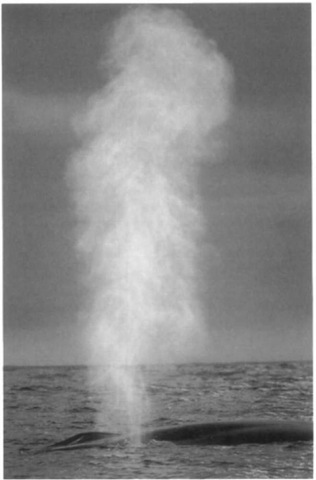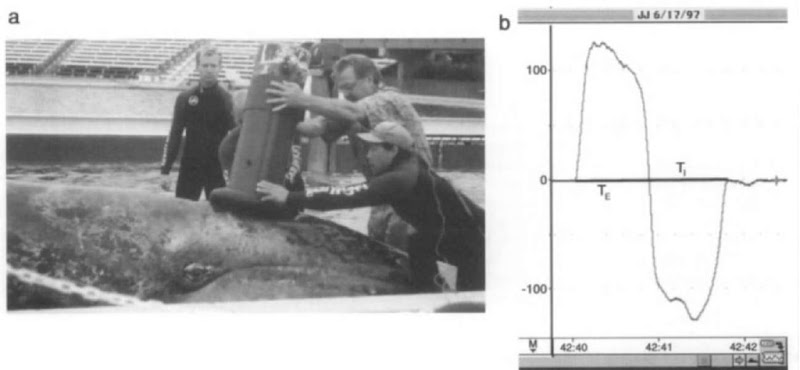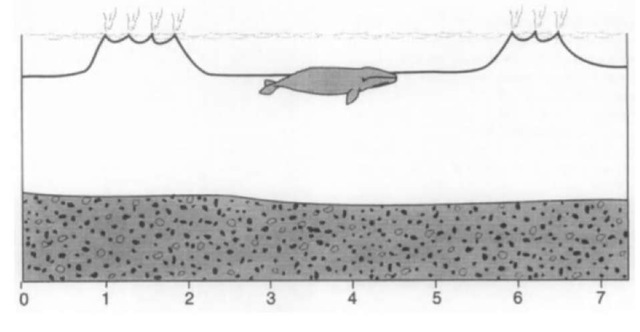Blow is one of the most visible behaviors of whales when they are observed at the sea surface. Whale blows represent the rapid emptying, or expiration, of whales’ lungs through their blowholes in preparation for the next inspiration. The visibility of a blow is due to a mixture of vapor and sea water entrained into the exhaled column of air at the sea surface (Fig. 1). When a blow occurs below the sea surface, as it sometimes does, such as bubble blasts in gray whales (Eschrichtius robustus) or bubble trains in humpback whales (Megaptera novaeangliae), it may be intended as a signaling function to other nearby whales.
A complete breathing cycle typically consists of a very rapid expiration (the blow) immediately followed by a slightly longer and much less obvious inspiration and then an extended yet variable period of breath holding, or apnea. The rapid expiration of a typical whale blow (from as little as 0.3 sec in small dolphins and porpoises to 1-2 sec in large baleen whales) provides more time to complete the next inspiration as the blowhole of a swimming animal breaks through the sea surface and results in little delay before submerging again (Kooyman and Cornell, 1981).
Figure 1 Towering blow of a blue whale.
Figure 2 (a) Measuring ventilatory flow rates of a young captive gray whale with a pneumotachograph, (b) An example of a single expiratory/inspiratory event (vertical scale = flow rate, Usee; horizontal scale = time, min, sec).
The rapidity of the blow is accomplished by maintaining high flow rates throughout almost the entire expiration, which is in strong contrast to humans and other land mammals. The high expiratory flow rates of cetaceans are enhanced by very flexible chest walls and by cartilage reinforcement of the smallest terminal air passages of the lungs to prevent them from collapsing until the lungs are almost completely emptied.
Rates of air flow during a blow are measured with a pneumotachograph (Fig. 2), a device that measures instantaneous flow rates through the duration of the blow, which can be integrated over time to determine the volume of expired air for each blow. The largest lung volume measured in this manner was nearly 200 liters for a 10-month-old gray whale, and lung volumes approaching 5000 liters are estimated for very large blue whales (Balaenoptera musculus).
Blow patterns of whales vary, depending on their behaviors. In small dolphins and porpoises swimming at low speeds, blowhole exposure during a blow is minimal and gradually changes to porpoising above the sea surface at higher speeds. Porpoising behavior may serve to conserve energy because it is the most efficient way to breathe at high swimming speeds (Fish and Hui, 1991). When migrating, larger whales typically surface to blow several times in rapid succession and then make an extended dive of several minutes duration (Fig. 3). In this
manner, they reduce the amount of time they spend in the zone of high fractional drag near the sea surface. Thus, blowing in these mammals represents their best compromise in satisfying their oxygen demands while simultaneously avoiding large additional costs of energy for locomotion.
Figure 3 Typical blowing and diving pattern of a migrating gray whale.



